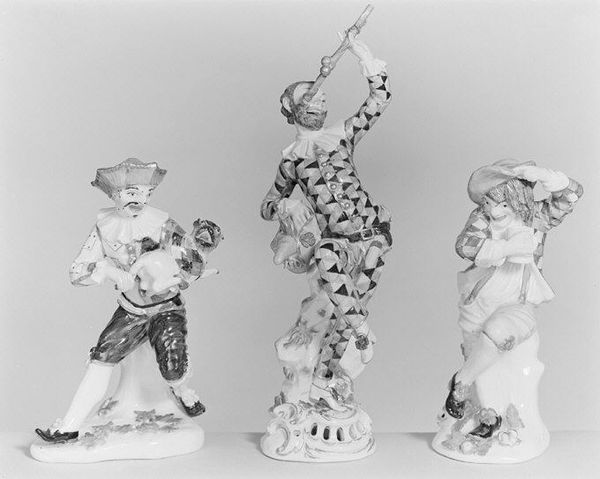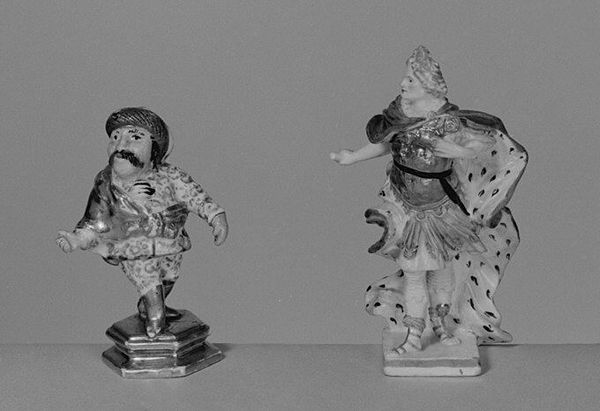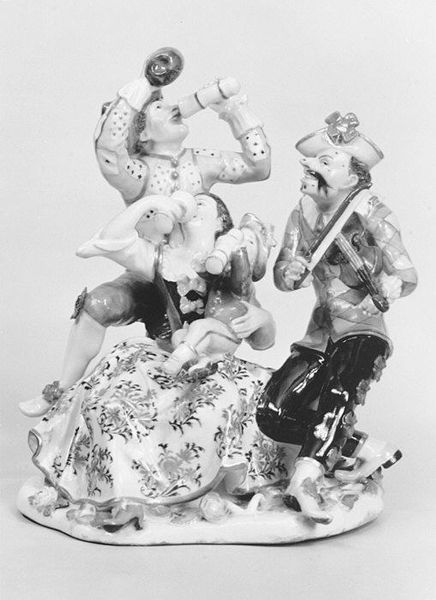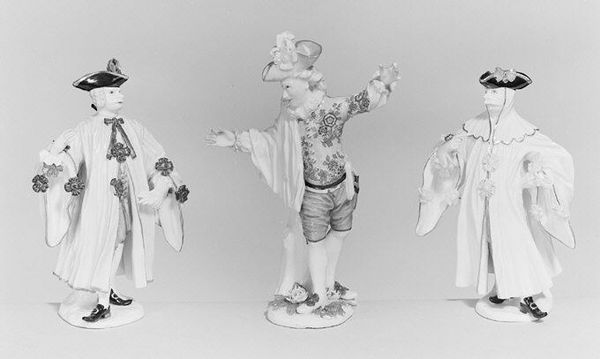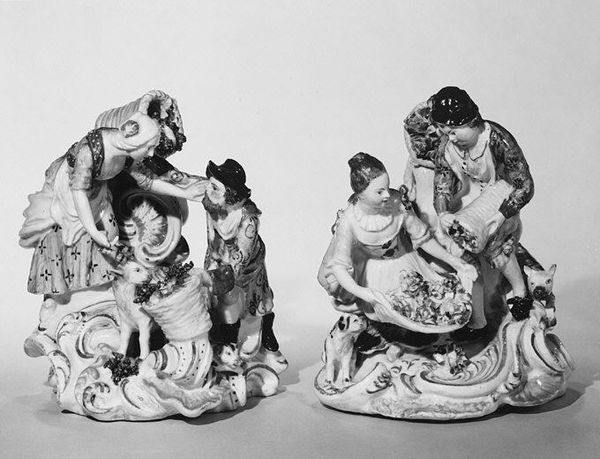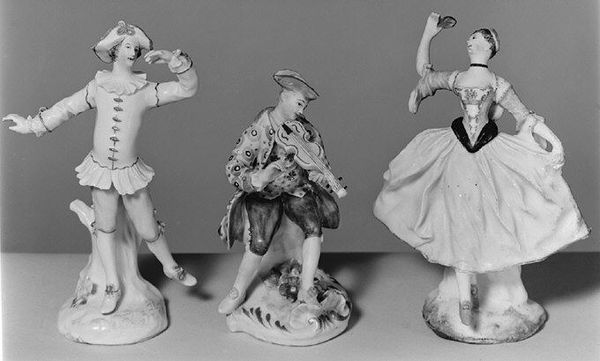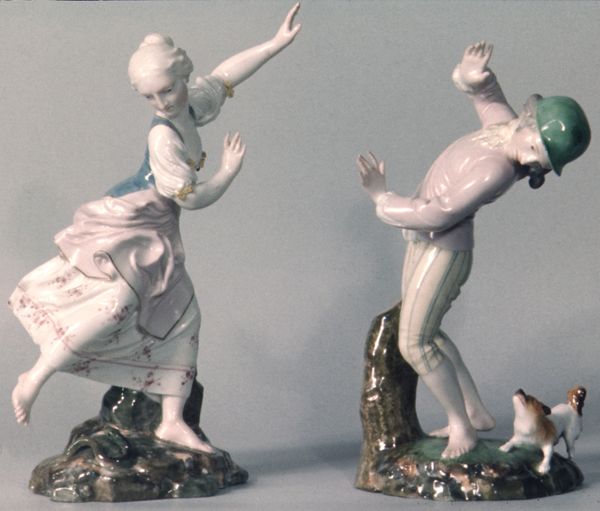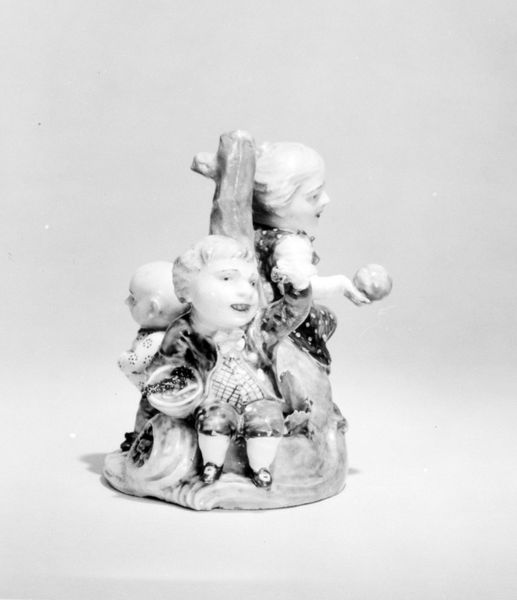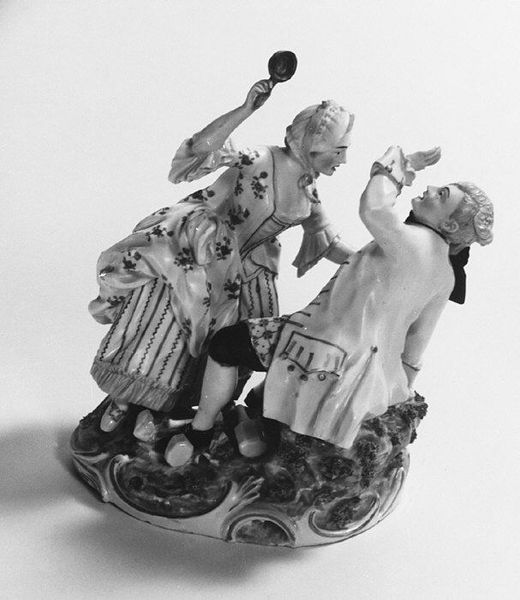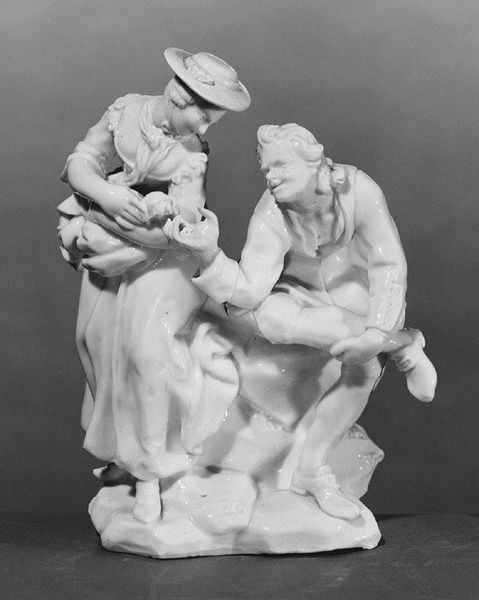
ceramic, porcelain, sculpture
#
sculpture
#
ceramic
#
porcelain
#
figuration
#
sculpture
#
genre-painting
#
decorative-art
#
miniature
#
rococo
Dimensions: Height: 6 1/2 in. (16.5 cm)
Copyright: Public Domain
Curator: I’m struck by the almost theatrical flamboyance of this small ceramic piece, likely a product of the Höchst Manufactory, crafted around 1750-1760. It’s titled “Musician with Goat.” Editor: It’s whimsy made manifest! A peculiar form in black and white, tinged with muted grey; almost comical in its arrangement of figures clinging to goats. What are we to make of these bizarre juxtapositions? Curator: The Rococo period absolutely reveled in lightheartedness and pastoral scenes. However, consider the goat. Often used to symbolize masculinity and fertility, its appearance here, embraced by these figures, prompts questions about class, social performance, and perhaps even veiled commentary on societal norms related to identity. Who had access to goats and who made music and for whom? Editor: That’s fascinating, considering the traditional symbolism tied to goats. It’s Pan, Dionysus and uninhibited nature all rolled into one image of pastoral revelry, isn't it? There’s something almost subversive about inverting the typical power dynamic; they cling to the goat as if needing to borrow some of its primordial strength. The porcelain rendering— so delicate —heightens that tension, transforming the mythical animal into a fragile, almost ironic symbol. Curator: Porcelain itself carries connotations of status and privilege during this era. To mold figures of commoners, and perhaps hint at behaviors outside the rigid aristocratic codes through them, would likely act as subtle commentary in domestic space for the owner. It asks: whom do we valorize in the privacy of our collections? Are we mocking or do we see our own reflections here? Editor: Looking closely, you’re absolutely right to draw attention to those layers. The almost comical facial expressions and rather haphazard posing hint that this might well be a commentary on control and perceived social status of the time. By portraying them intertwined this way, it amplifies not the animal’s energy, but rather reveals a poignant message of fragility or, to the other extreme, perhaps commentary on freedom and pastoral leisure. Curator: Absolutely, and I’d wager the artists aimed for that deliberate ambiguity to ensure the artwork spark discussions amongst those who viewed it. The location – the Metropolitan Museum of Art in New York - continues to serve this function today. Editor: Indeed, what starts as seeming decoration grows with analysis into something with many layers! This really shows us how crucial symbols, as time marches on, maintain emotional weight.
Comments
No comments
Be the first to comment and join the conversation on the ultimate creative platform.
